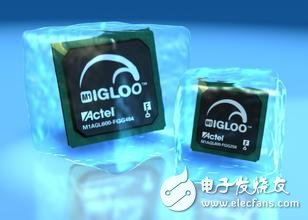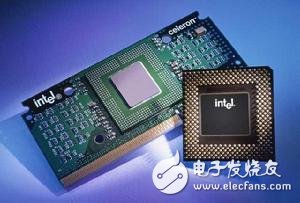The continued demand for high performance and new featured products in the market has created challenges for portable devices. In many cases, the design has reached the limit of the allowed power consumption. Computer and telephone users often do not use products that have a short battery life. Therefore, the best solution is to reduce the power consumption of the circuit - starting from the microprocessor, it is the core of the system and consumes the most power.
Often, the processor is the most important power consuming component, although other components of the portable device consume a lot of power. For example, in notebook computers, disk drives, display and graphics circuits compete with microprocessors for available battery power. In a communication device, such as a digital cellular phone, the power consumption of its RF circuitry is comparable to that of a baseband processor. Therefore, as a design engineer, a power budget must be drawn up and the relative priorities of the different characteristics determined.
In the "Mobile Power Guidelines 2000" published by Intel Corporation, it is recommended that the notebook computer power budget be allocated 5W to the processor of the micro-notebook computer, and 9.5W to the processor of the full-featured notebook computer (see Table 1). Both types of notebooks are supposed to contain a hard drive (about 1.4W), but only the larger ones contain a DVD drive (1.4W). Similarly, the micro-notebook computer distributes less work (2.8W vs. 4.3W) to the display. As can be seen in the Interl example, any reduction in required power must be done in all aspects, not just in terms of processors. Even if the efficiency of the microprocessor continues to increase, the processor power is typically significantly lower, and performance is often weighed. Therefore, the requirements for processor performance must be balanced with the requirements for other features such as DVD drives.

Difficult comparison
The power ratings of different types of microprocessors (CISC, RISC or DSP) are different.
This is because they are for different applications. For a given type, different manufacturers also specify the rated power under different conditions. The power increase is usually proportional to the workload. Therefore, microprocessors are often rated as how many watts are required per megahertz clock frequency. However, other types of processors execute more instructions or perform more operations at a given clock frequency. Therefore, some vendors like to calibrate how many Mips (millions of instructions per second) or MOPS (millions of operations per second) per watt of power consumption.
Unfortunately, most of the values ​​peddled by manufacturers do not give the information they need. One would like to know the power consumption under normal operating conditions in a particular application. Many microprocessor manufacturers give power under no-load conditions, not peak performance. Therefore, the best approach is to calibrate a standard benchmark that is very similar to the actual application. Intel's recommended power budget for notebook computers is based on the "3-D WinBench" test, which includes graphics-intensive instruction mix ratios. Therefore, the Mobile PenTIum II processor with L2 cache for micro-notebook applications has a peak power of 6W, a sleep power of 0.36W, and an average 3-D WinBench power of 5W.
One way to reduce power consumption is to add more peripheral components to the processor chip to avoid line drivers that require power. This approach also helps improve overall performance by avoiding parasitic inductance and capacitance. Of course, adding circuit components will still increase the total power consumption of the chip.
Performance improvement
Interlx86 and PenTIum microprocessors designed for general purpose PCs and workstations always require large amounts of power due to their large instruction set and complex architecture. However, with the advent of portable computers, Interl had to introduce a lower power version of its processor for the mobile device market. Interl now offers mobile versions of the Celeron and PenTIum II processors. The mobile Celeron has a clock frequency of up to 366MHz, while the mobile 433MHz model is launched every three quarters this year. Interl will launch the "Copper-mine" PenTIum III mobile model at the end of this year, working at 600MHz or above.
The Interl mobile microprocessors now use PGA (Pin Grid Array) sockets. In the original Celeron processor, the L2 cache was included in order to reduce the cost, but the 128kB on-chip L2 cache was included, while the Pentium II and Pentium III L2 were 256 kB. Of course, all processors now include a 32 kB L1 cache. The Celeron model has the lowest power consumption in Intel's mobile processors. Due to the "Quick Start" feature of the mobile Celeron, the no-load power of the convenience processor is only 0.4W, while the power of the Pentium processor using MMX technology is 1.1W.
In general, newer processors are more efficient than their original models. Using an on-chip L2 cache improves both performance and actually reduces power consumption (same as using an external L2 cache of the same size). Similarly, parallel processing is an effective way to improve performance without significantly increasing power consumption. In addition to superscalar and super-pipelined hardware architectures, Intel's new chips include SIMD (Single Instruction, Multiple Data) processing for special multimedia instructions. Most high-performance microprocessors now use a 0.25μm process, while the next generation will use 0.18μm. So the power/performance ratio continues to drop.

split solar street light is a simplest solar street light which integrated by high efficient PV module, rechargeable battery and LED fitting and smart controller. It offer total freedom from electrical "mains power" without request for trenching cabling or expensive label costing. Not only our solar powered light are clean energy, eco-friendly and ZERO running costs., but also uncontrolled to grid power fluctuations and blackouts, ensuring perfect performance and continuity of service & safety all year round.
Solar Street Light Led,Split Solar Street Lights,Solar Powered Street Lamp,Solar Street Light With Panel
Jiangmen Biaosheng Solar Energy Technology Co., Ltd. , https://www.bsprosolar.com